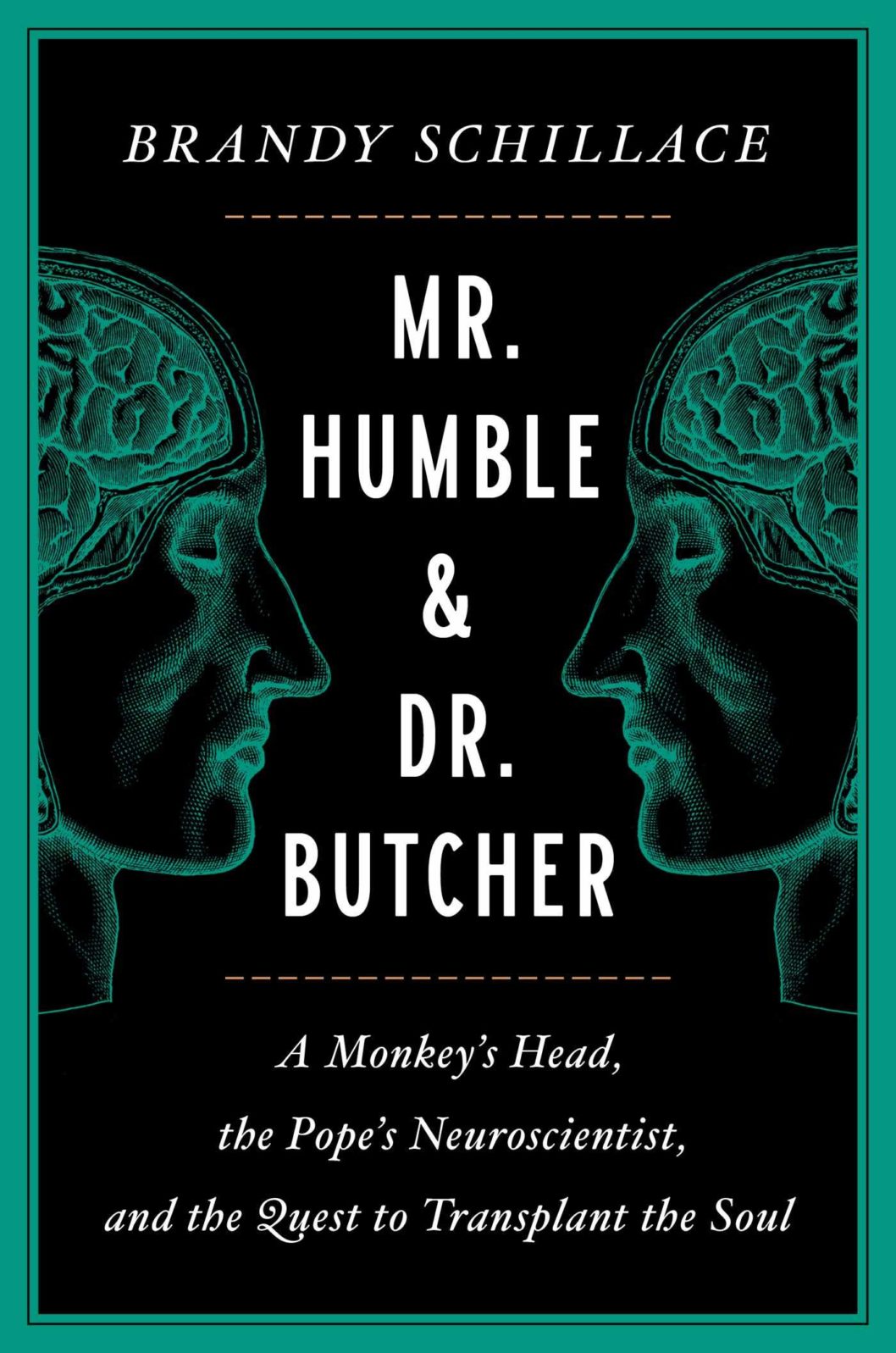What Would Head or Partial Brain Transplants Do To Consciousness?
Researchers had some success swapping rodent heads (though there’s a catch) but no luck with monkeys. And then animal lovers weighed in…Science writer Max G. Levy, profiling Brandy Schillace’s book, Mr. Humble and Dr. Butcher (2021), reminds us of the strange case of neurosurgeon Dr. Robert White (1926–2010) and his quest to develop human head transplants — or, as he liked to put it, body transplants. A new body for your old head… an offbeat form of immortality.

White started with rhesus monkeys. At Case Western Reserve University, starting in 1970, he attempted many such transplants. Only one attempt succeeded (sort of). Without the usual spinal connections and thus without access to a body, the monkey head lived only nine days. Another such monkey head transplant was reported in 2016 — carried out by Xiaoping Ren at Harbin Medical University, China — but the transplanted monkey head was apparently euthanized 20 hours later “for ethical reasons.”
Xiaoping Ren’s work garnered broad attention because Italian surgeon Sergio Canavero cited it in an effort to gain support for his forthcoming attempt at a human body transplant (or “cephalic exchange”, as he put it), to be done at a hospital in Hanoi. The proposed recipient of a donor body was a 31-year-old Russian, Valery Spiridonov, who suffered from a muscle-wasting disease that would likely claim him in the next few years.
Bioethicists dined out on the controversy for some months but in 2018, Spirodonov canceled the procedure after he and his wife had a son. Some find the circumstances of his withdrawal rather murky but then the whole area is hardly conventional medical science. The scenario had been played out in the 1970s when Robert White met quadriplegic Craig Vetovitz, who also ultimately declined the surgery.
Even before the briefly successful monkey body transplant, the concept had found its way into horror films, most notably, perhaps, The Brain That Wouldn’t Die (1962)
The transplanted head can be kept alive for a time but the donor body remains paralyzed
Why would quadriplegics contemplate a body transplant if the transplanted head cannot move the new body anyway? In one word, longevity. Quadriplegia weakens body organs; a new body offers new organs to keep a head alive.
But then what about the reports that, when rodent heads are transplanted onto other rodents’ bodies, the heads can enable the bodies to move again? As researcher Andrew Jackson explains, that’s not quite what happens:
Given sufficient retraining, rodents – even with completely severed spinal cords – can learn to walk again, because much of their circuitry for locomotion is located below the injury.
In contrast, the brains of primates such as monkeys and humans are more directly involved in guiding movements.
Andrew Jackson, “The problem with human head transplants” at The Conversation (January 26, 2016)
So the fact that rodents could walk again didn’t predict that monkeys could, or even that they would survive the operation. And it says nothing about what would happen to humans.
What about cruelty to animals?
In any event, what are the transplanted monkey heads probably experiencing?:
In the original studies by Robert White and Vladimir Demikov, it was made clear that these experiments were lethal for the animal. Simply put, while the head of the animal was capable of “seeing, hearing, tasting, smelling”; none of the other regulatory processes were intact (e.g. breathing) as there was no control over the donor body. Furthermore, like many tissue transplants, rejection of the donor body from the immune system is a large possibility, immunorejection was after all the cause of death in the monkey whose head Dr White transplanted in 2001.
Jeremy Bailoo and Justin Varholick, “PR, ethics, and the science of head transplants” at Speaking of Research (January 22, 2016)
In any event, no monkey survived long. Not surprisingly, there were strong protests against the cruelty that the experiments involved:
Jerry Silver, a colleague of White’s and the neurosurgeon behind the rat spinal cord experiment, objects to the entire notion of a human head/body transplant. “It’s complete fantasy,” he said in an interview with CBS News. Reminiscing about the psychic torture that he believes White’s original monkey patient suffered, he added, “I remember that the head would wake up, the facial expressions looked like terrible pain and confusion and anxiety.” He dismissed Canavero’s theory as “bad science.” Given how controversial the monkey experiment itself was, it’s highly likely that Silver is one of many.
Lex Berko, “Meet the Late Dr. Robert White, Who Transplanted the First Monkey Head” at Motherboard (November 7, 2013)
How would partial brain transplants affect human consciousness?
Total body transplants in humans may never succeed for technical reasons, in which case we will never know how they would affect consciousness. But, for all we now know, partial transplants from one person’s brain to another one’s might fare better.
Neurosurgeon Michael Egnor has reflected here at Mind Matters News on what partial transplant recipients might experience: For example, “If tiny bits of the brains from all the people in my neighborhood were transplanted into my brain, would there be a neighborhood in my skull?”:
In that case, one’s actions would be determined in detail thereafter by a town hall meeting perhaps. But then he offers a more subtle question:
What if different parts of the brain could be transplanted? What if I switched right brain hemispheres with my neighbor? Would my neighbor be able to move my left arm while I could move his right arm, and vice-versa? What if my neighbor and I switched speech centers of our brains? Would I speak my neighbor’s thoughts and he speak mine?
These are fiendishly fascinating questions. Interestingly, there are conjoined twins who share brain parts and cooperate in some movements of limbs and even seem to think similar thoughts at times. So this question is not merely hypothetical.
Michael Egnor, “Are head transplants soul transplants?” at Mind Matters News (March 10, 2021)
Most people probably hope that won’t be tested any time soon.
On a practical note, White is remembered today for a development he hoped to use in head transplants but is used in a more conventional scenario today: His brain-cooling techniques help save heart attack patients. He was nominated for the Nobel for his spinal cord cooling techniques..
Body transplant is a frontier of medicine likely to remain undeveloped because unrelated advances offer increasingly promising treatments for those who live with paralysis. But the monkey experiments had one lasting good outcome. They were instrumental in creating more general awareness of cruelty to sentient lab animals.
You may also wish to read:
Yes, split brains are weird, but not the way you think. Scientists who dismiss consciousness and free will ignore the fact that the higher faculties of the mind cannot be split even by splitting the brain in half.
Some people think and speak with only half a brain. A new study sheds light on
how they do it.
Boy born with 2% of brain does maths, loves science. Noah Wall’s story raises intriguing questions about the relationship between the brain and the mind
and
Four researchers whose work sheds light on the reality of the mind The brain can be cut in half, but the intellect and will cannot, says Michael Egnor. The intellect and will are metaphysically simple.
